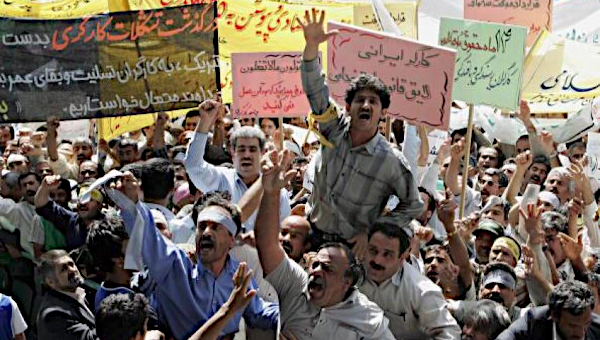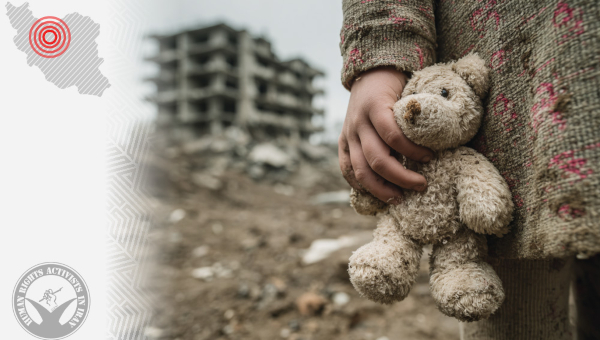Rhythm of Revolution in Iran: In the Name of Zhina (Mahsa) Amini
On 16 September, a 22-year-old Kurdish Iranian woman named Zhina (Mahsa) Amini was murdered, being severely beaten by the Islamic morality police. Her death resulted in nation-wide protests that have been unfolding in Iran for more than 40 days. Iran Human Rights reported that at least 233 people have been killed by security forces across the country. Iranian security forces either fire into groups or kill protesters by beating them with batons.
Women’s leadership of the protests has shaken the Islamic-Shiist foundations of the established power. Aside from these tragic and dreadful incidents, there is a lot to learn, discuss, and critically reflect on. The remarkable bravery of the protesters, and specifically, women in the streets, is admirable and significant. Demonstrators all over the world have removed their hijab or publicly cut their hair as acts of protest in solidarity with Iranian protesters. We are facing a stunning eruption of revolutionary1 artistic performances to reclaim public space.2 A wide range of progressive statements has also been released internationally in solidarity with Iranian protesters.
There is a lot to be said about this new round of emancipatory struggles in Iran. To date, several narratives of this revolutionary movement have been published, both inside3 and outside4 Iran (reports, interviews, essays, etc.). Here I would like to highlight some unexplored and/or missing points in these new discussions about the nature of the movement. Needless to say, the mainstream media does not provide a precise picture of what is happening in Iran. The Islamic Republic lobbyists (including but not limited to the controversial National Iranian American Council (NIAC), the vast network of the Islamic Republic’s propagandists working as media reporters, as well as academic institutions and figures) have been persistently working to whitewash the systematic crimes of their patron in the form of the Islamic Republic. It is not, therefore, surprising that the mainstream media functions as a platform for the Islamic Regime and its proponents to propagate their desired picture by distorting the reality. They are all accomplices in the crimes and violence of the Islamic Republic. My focus here is on some geo-historical aspects of the current revolutionary movement of Iran.
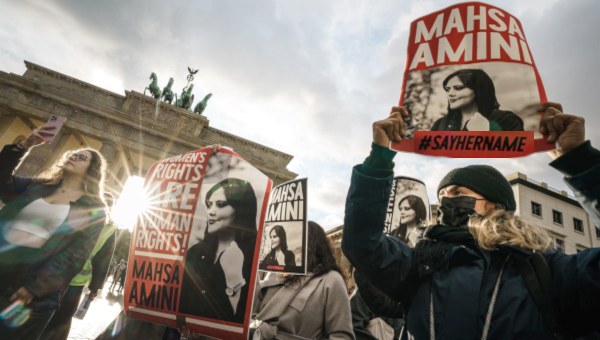
Diverse Protests
With regard to the social demographics of the protests, it should be noted that we are experiencing an unprecedented diversity. Individuals from different ages – from primary-school students to seniors who are 70 or older; male, female, and the non-binary; and people of different ethnicities/nationalities (Kurdish, Baluchi, Turkish, Arab, Persian) are actively engaged in the protests in different forms. As well, a diverse range of associations and unions have gone on strike or issued calls for strikes. Among them we can refer to the growing numbers of student unions from different cities across the country, notably in Tehran, Isfahan, Tabriz, Mashahd, Qazvin, Hamedan, and Arak; and a range of labour unions and syndicates, such as Haft Tappeh Sugar Cane Mill Labor Syndicate, Organizing Council of Contract Workers, oil workers in Asaluyeh, Traders in Tehran’s Grand Bazaar, Shiraz Bazaar and markets in towns and cities in Kurdistan, Bushehr Petrochemical Workers, the Coordinating Council of Trade Union Organizations of Iranian School Teachers, and the Workers at the South Pars Phase 14 Conventional Gas Field. Some other collectives like Women Workers of Haft Tappeh and Baluchi Women have also issued influential statements in support of the revolutionary upsurge.
These clearly show to what extent different strands of social forces have been activated by the people’s continual protests over the last four weeks. It seems that the slogan “Woman, Life, Freedom” has unified a broad range of social forces around some specific goals. They are all demanding a free life for all Iranians, regardless of their gender, religion, and ethnicity. Although the hijab question has highlighted the necessity for eliminating the gender and religious (Shiist) discriminations, claims are also emerging for the self-determination of ethnicized nations within Iran.
Due to the lack of independent reliable sources, we do not have a clear picture of the relative weight of the various social forces involved in the protests. If we want to give a very general estimate, it can be said that the most vehement position belongs to the pro-Pahlavi monarchists (reaching back before the Islamic revolution of 1979). But if we turn our attention from the mainstream media and focus on what is happening on the ground (by referring to the released videos of the protests in more than 100 cities across the country, their places, and the chanted slogans), it appears that the actual presence of the Pahlavists is not significant. Their huge propaganda machine has failed to fully reach the masses, and many segments of the masses are actively rejecting it. It is worth noting that even this existing level of support for the old Pahlavi regime should not be taken as the result of an entirely organic process. Most of the pro-Pahlavi protesters are passive defenders of the Pahlavis because alternative views have been eliminated. Their worldview has been largely shaped by, and is limited to, the nation-state-centric (Iranist/Farsist) viewpoint that has developed over the past century.
Both the Pahlavi and the Islamic Republic regimes have systematically suppressed and eliminated alternative ideas, figures, and movements and normalised organized terror and murder. For instance, the two regimes have continuously suppressed and eliminated leftist movements, parties, and intellectuals. The execution of Khosrow Golsorkhi and Bijan Jazani, as well as the mass executions of Iranian political prisoners in 1988, are just two obvious cases. So, in a more open political environment where progressive groups can operate freely, Pahlavi’s supporters are likely to become even less influential.
Geographies of Revolution
Not only is this revolutionary movement geographically more widespread than the protests in Iran in 2009, 2017, and 2019, it also has distinct and emergent features. First, it expanded to all the provinces in less than a few days. On the day 5 of the protests, more than 80 cities were already involved. Unlike all previous rounds of bloody protests in recent years, the September uprising has expanded from the most western (Oshnavieh and Piranshahr) to the most eastern (Zahedan) cities, and from the most northern (Rasht) to the most southern ones (Bandarabbas).
The same pattern of geographical dispersion has been evident within each city. For instance, in the capital city of Tehran, which is the most divided urban space in the country, there have been protests in the richest bourgeois districts like Zafaraniyeh, in the north, as well as in the most deprived working-class neighborhoods of Fallah and Nazi Abad in the south. In addition, we are experiencing an emergent form of irregular street fighting that has exhausted, and in some cases, paralyzed security forces of the Islamic Republic. Interestingly, protests have exploded even in the most religious cities of Iran (Qom, and Mashhad), which have been traditionally considered as the most fortified citadels of the Islamic Republic.
Thus, the protests have traversed all geographical scales. Compared to the previous protests, more universities have actively kept the flame of revolution burning. Their interventions are not limited to demonstrations. They have gone on strike as well. Al-Zahra University, a female-only (gender-isolated) public university in the Vanak neighborhood of Tehran, which was assumed to be one of the most conservative or politically neutral universities in Iran, has joined the protests in the strongest way. It must be noted that Al-Zahra University’s students have chanted some of the most progressive slogans of the movement (like Marg Bar Setamgar, Che Shah Bashe Che Rahbar: “Down with the oppressor, whether he is a Shah or a Supreme Leader”). Moreover, the protests have cut across high schools and middle schools. The extent of the movement has not been confined to the physical space. The hashtag that has been trending in support of Mahsa Amini has been retweeted more than 270 million times. This figure has set a new record in the entire history of Twitter. “For context, since mid-2013, the #BlackLivesMatter hashtag has accumulated 63 million tweets.”5
The emancipatory slogan “Jin, jiyan, azadî” (Woman, Life, Freedom), a Kurdish slogan that emanated from the Kurdish women’s liberation movement, soon turned into the Iranian movement’s motto. The slogan functioned as a uniting thread that weaves together the protesters from different social classes, from both the centers and the peripheries, at least formally. I say formally because there is a long-standing and deep-rooted controversy over what the alternative form of political organization of space will be after the Islamic Republic.
The Internal Colonies
Before we proceed, some geo-historical context is required. Prior to the forcefully imposed formation of Iran as a nation state and a national territory, which can be traced back to the foundation of Pahlavi dynasty by Reza Shah in 1925, Qajar Iran was made up of a range of loosely connected states (Mamalek) with a great degree of political-economic independence from the capital, Tehran. This was evident in the official name of the Qajar Empire: the Guarded Domains of Iran (Mamâlek-e Mahruse-ye Irân). The central power was not able to exercise its authority over the vast dispersed and island-like geographies of Mamâlek-e Mahruse. Creating a unified political entity required proper material (technological-infrastructural) conditions which were absent at that period of time. The same situation applies to the time preceding the Qajar era. If we disregard the controversial era of the Safavid dynasty (1501-1722), lack of a central power has been a determining feature of ‘Iran’ at least since the Muslim conquest of Persia (633 AD). The absence of Iran itself as a geopolitical entity in pre-Pahlavi era here is important to the modern configuration of the state, but there are also implications for the current revolutionary struggles in Iran.
On September 30, the Islamic regime brutally killed more than 90 individuals in Zahedan, Baluchestan (the Zahedan massacre). To date, more than 30 individuals have been killed in Kurdestan as well. It should be noted that Baluchestan is the most colonized region in Iran. One can argue that Baluchestan exists in an entirely different temporality than urban centers like Tehran. Kurdestan, alongside Khuzestan, Turkmen Sahra, and Azerbaijan, are other ‘colonial’ zones under the Islamic Republic. The 2019–20 Iranian protests experienced another mass killing of protesters, in the so-called Mahshahr massacre. Mahshahr is an Arab-speaking city in Khuzestan province, and also among the most colonized regions in Iran.
Unfortunately, there is nothing new about the forced displacements and even genocides of the colonies and nomadic populations of Iran. These brutal practices have been in place in different forms at least since the Safavid era of 1501-1722. Although it was mostly through the imposed and violent formation of the nation-state under Reza Shah Pahlavi, from 1925-1941, that the semi-independent regions of Baluchestan, Kurdestan, Khuzestan, Turkmen Sahra, and Azerbaijan were forcefully pulled into the spatial and temporal matrix of the central state, which deepened and intensified colonial production by a modernizing Iran and, in turn, the Islamic Republic.
Internal Colonialism and Persian/Farsi Language
All these territories are inhabited mostly by non-Persian-speaking populations. The production of Iran as a national state has been intertwined with the imposition – often violent – of the Persian/Farsi as a national language. Dissociation of peoples from their culture and language has had an alienating, intergenerational impact in these regions. Farsi has acted as a key determining factor in the colonial production of Iran.
The brutal murder of Mahsa Amini and the subsequent movement has brought the language/colonial question to the fore. One of the most-frequently chanted slogans in the current demonstrations is “Say Her Name: Mahsa Amini.” Ironically, her name is Zhina (a Kurdish name: ژینا ئەمینی), and Mahsa, her second name, is Persian.
Despite the history of internal colonialism in Iran, a Marxist analysis of the problem is still lacking. Marxist analyses of Iran have been mostly limited to the traditional orthodox (economistic) or post-modern (culturalist) perspectives in which questions of internal colonialism, gender segregation and discriminations, and language repression have not received any meaningful attention.
Iran as a national state is also a colonial geography. But this does not tell the whole story. If the coloniality of national space can be characterized in relation to Farsism, the sexist and gendered aspects of national space can be understood most clearly with reference to Shiism. Farsism and Shiism, however, are interconnected. It is the logic of the Islamic Republic as a nation-state that articulates the Farsist and Shiist moments into a whole, a phenomenon that I have called Farshiism.
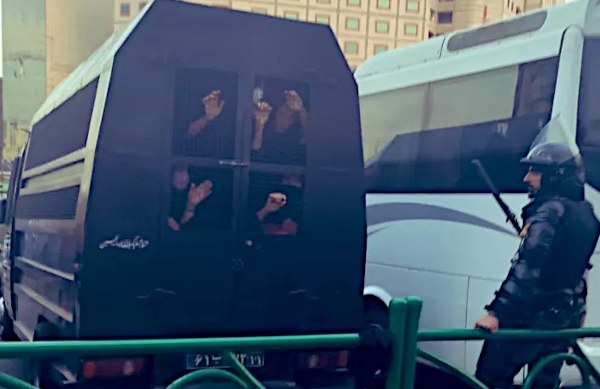
Body, State, Revolution
In the context of revolutionary struggles of Iran, “separationist” (Tajzie Talab), “whore/libertine” (Harze), “dishonorable” (Bi Gheyrat), and a range of similar sexist adjectives are used as equivalents with a particular purpose. “Nationless” (Bi Vatan), “rootless” (Bi Rishe) and “bastard” (Haramzade) are used interchangeably as curses. Those who want to control their own individual or collective bodies and reject any external, imposed authority over their bodies are being addressed and named as separationist, whore/libertine, and dishonorable. The Islamic Republic, we can say, attempts to imposes its own flat, homogeneous space by carrying out a systematic dressage of bodies, eliminating regional and linguistic differences, through Farshiism.
In fact, there are two fronts to be confronted. On the one hand, the advocates of the established order (which is broader than the Islamic Republic) who are committed to the repression and subjugation of individual and collective bodies vigorously try to prevent any form of self-determination and autonomy from happening. On the other, there are those progressive forces who explicitly claim the self-determination of individual and collective bodies and defend differences to be acknowledged and replicated. The first front wants a single flag; an alienated conformity and abstract unity imposed externally from above; while the second front seeks a multiplicity of flags, polyphony, and organic multiplicity to be shaped internally from below. This contradiction, then, can be characterized as a war between a ‘mono-rhythmicity’ of the established class/national order and the ‘poly-rhythmicity’ of a new emancipatory social order.
Those who are frightening people regarding the disintegration of Iran are mostly the same sexist individuals6 who are apparently concerned with the sacred body of “nation” being raped by aliens. For them, rape must be the freehold estate of a central, exclusive authority: Father, Guardian, the State. It is exactly according to this Islamic logic that the Father/Guardian can intentionally eliminate its offspring and yet qisas (which is the norm in the Islamic law) does not apply to him. This is the same logic of the nation state (Islamic or otherwise) which is also manifested in the reactionary slogans of these days.
“Man, Nation, Development” and Fascism
Trapped in a liberal, nationalist conception of rights, the Iranian right-wing – which includes a range from the far-right fascism of Aryanists, monarchists (Pahlavists), and Shiists to the conservative Iranism/Farsism of the so-called middle class, are unable to see rights beyond an individualistic paternalistic framework. They accordingly defend the individual rights of expression, and having control of the individual bodies, but at the same time, denounce any form of social/collective right to self-determination and to local, urban, or regional autonomy. Categorizing all forms of the collective right to self-determination as a secessionist tendency that jeopardize “territorial integrity” of Iran, the right-wing classes impede any form of collective rights from being recognized. It is in this context that monarchists, reformists, and more broadly, Farsist/Iranist elites deter and dissuade Iranians from the idea of Syrianization or disintegration of Iran. The point is that such a tendency is not exclusive to the Islamic Republic itself but is also on the agenda of all allegedly oppositional groups: Pahlavists, reformists,7 or more generally, Farsists/Iranists. It was then not at all unexpected that all of these groups became united around the counter-revolutionary slogan of “Man, Nation, Development” (Mard, Mihan, Abadi), a slogan with explicitly paternalistic, sexist, nationalist, and developmentalist connotations in Farsi. “Man, Nation, Development” can be considered as another name for what I have called Farshiism.
A similar position is held by a particular faction of Iranian anti-imperialist (nationalist) left. Although they do not necessarily start from the same individualistic presuppositions, they end up in the right-wing front. Let’s focus for a moment on them – more commonly known as The Axis of Resistance Left (Chap-e Mehvar-e Moghavemat). This relationship between the axis of resistance left and the right-wing front also applies to the relationship between the former and the Islamic Republic itself. Allegedly of different interests, they also end up with the same reactionary position: defending the Islamic Republic at any cost. The anti-imperialists suggest that the Iranian protests are not an organic struggle emanating from Iranian’s real concerns and demands by Iranians. Rather, they claim, they are the work of ‘the enemy’, i.e., American and Western imperialism and their interests in disintegrating and Syrianizing Iran. So, both the Islamic Republic and the Iranian anti-imperialist left argue that Western imperialism has provoked and deceived people into protesting. This fraudulent anti-imperialism disregards a range of different forces including the role of other imperialist powers and the form of the nation-state itself. It, in effect, justifies existing class relations and all other forms of domination including gender segregation and internal colonialism in Iran.
Imperialism, in this way, is understood in an abstract, non-stratified, flat manner which is blind to the uneven and multi-scalar nature of capitalist imperialism and its multi-layered colonial logic. As a result, the Iranian anti-imperialist left rejects American-Western imperialism only to embrace Russian and Chinese imperialisms. In the view of the Axis of Resistance left, the anti-US or anti-Western stance of the Islamic Republic automatically means that oppositional forces must suspend their progressive struggles and defend the regime’s agenda, often including its regional interventions.
Maybe not surprisingly, this same position can also be found in a particular strand of the Western (anti-imperialist) left towards the Islamic Republic as well. Some on the Iranian anti-imperialist left are followers of this anti-imperialist Western left.8 The former represents a wider tendency amongst some of the latter to fall into either remaining silent about the opposition movements inside Iran or showing a primary concern with the state form and disregarding it as a constitutive part of the western imperialism itself. Ill-informed positions taken by these Western anti-imperialist leftists towards the Islamic Republic, or their silence with regard to the Islamic Republic atrocities, all have effectively contributed to the defamation and discrediting of the left in its entirety, and specifically among the Iranians. These Western leftists have almost nothing to say about the internal contradictions and conflicts in Iran, within a Shiist society itself. This makes their analyses abstract and misleading. The similarity and convergence is to such an extent that one cannot distinguish between the views of these Western leftists and the commentaries that are published in the IRGC’s media network like Tasnim News Agency. Such analyses reflect and promote the Islamic Republic’s official position.
Lack of concrete critical knowledge of the multinational and highly diverse society of Iran, made possible and facilitated by the Western mainstream media and the Islamic Republic’s propaganda itself, has had an extremely negative effect on the development of genuine collective emancipatory struggles among Iranian nations.9 The point is that this abstract anti-imperialism (or the unqualified over-emphasis on Euro-American imperialism) prevents the formation of any progressive historical bloc by reproducing the logic of the capitalist nation state. It is, however, this very logic that Iranian revolutionary forces intend to transform.
There is good reason to be cautious of the misuse of the ‘disintegration of the state’ and ‘Syrianization’ discourses by the ‘axis of resistance’ Left in Iran. The Islamic Republic and IRGC have been, after all, the most important advocates of al-Assad’s regime and thus themselves among the central agents of the Syrianization of political space.10 All revolutionary forces should take seriously the role of the Islamic regime to pursue the Syrianization of space in producing new spatial divisions and hierarchies within Iran. In order to impede the revolutionary movement, the Islamic Republic will not hesitate to initiate a civil war. As a result, the revolutionary forces must devise appropriate counter-strategies.
This directs our attention to the vital question of the colonized nations in Iran and the necessity of developing a relevant non-central political organization of space (like democratic confederalism or a multi-national federation). It is only by recognition of regional self-determination that a powerful, organic collective front against the Islamic Republic, and more broadly, against the ruling classes, can be formed. Otherwise, this front will easily reproduce the existing forms of dominations, even if it could manage to overthrow the Islamic Republic regime. Feminists, Marxists, anarchists, and all other progressive forces should take this into account, and the role of women is crucial in this regard.
Burning Hijabs: The Question of Islamophobia
We should make it clear that the protests in Iran are not against Islam. Iranians are protesting against compulsory hijab and other forms of bodily oppressions (something quite distinct from the anti-hijab sanctions of Western Islamophobia.. Those courageous women who burn their hijabs in public are expressing the necessity of autonomy (individual and collective freedoms). They are claiming the basic rights that have been systematically denied them for more than four decades. Iranian women and other protesters demand their right to life. They are reasserting their right to the city, to space, to difference. Iranians are protesting against the Islamic Republic and its class institutions: Velayat-e Faqih (Guardianship of the Islamic Jurist) and IRGC (Islamic Revolutionary Guard Corps). What is at stake is therefore a particular form of Islamism and Shiism – embodied in the Islamic Republic – not Islam per se.
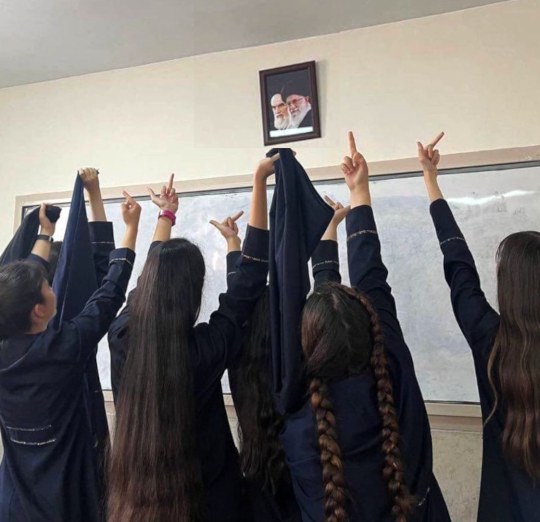
“Iranians” are suffering from a range of interlinked forms of domination, but the hijab, however, represents the condensation of the Islamic Republic, as the Islamic Republic itself is the condensation of the dominant class relations. Hijab is the concretization of the Islamic Republic. It is exactly through hijab (and Farsi language) that the Islamic Republic has been able to maintain its hegemony. The compulsory hijab is, in a sense, the concretization and condensation of Shiism under the Islamic Republic, therefore shapes one of the fundamental pillars of the totality of relations of domination in Iran.11 But it should be noted that not wearing hijab would definitely make the person unemployable.
Hijab most clearly indicates the gender apartheid system rooted in the Islamic Republic Shiist ideology. This ideology does not merely influence female bodies. According to this Shiist perspective, bodies are either male or female (be male or fail!). The very existence of all other bodies is denied or concealed, let alone the possibility for them to be employed and live. Under the Islamic Republic, the punishment for adultery is stoning. This means the convicted person can legally be stoned to death. Being homosexual is also legally punishable by death according to the Sharia. Let’s not forget that if you do not have a practical commitment to Velayat-e Faqih (or The Guardianship of the Islamic Jurist gives the jurist/faqih an absolute control over all public and private matters like how to dress), you cannot be employed in governmental jobs like school teachers, university professors, lawyers, official translators, etc., no matter whether you are a man or a woman. All these processes are systematic mechanisms of alienation and production of docile bodies, mechanisms which have been in place for more than four decades under the Islamic Republic.
Everydayness of the State and Revolution
A united front against the Islamic Republic has formed. This front, however, is internally diverse and contradictory. Among them, monarchist and fascist advocates of Reza Pahlavi (the oldest son of Mohammad Reza Pahlavi, the last Shah of Iran) have the loudest voices and the material means to have them heard. Their reactionary agenda is promoted on a daily basis by the mainstream media and popular Persian-language TV and news agencies like Iran International, Manoto TV, and Independent Persian. They are staunchly working to represent their desires as the protesters demands. Yes, monarchists might still have some partial foothold in Iran. Nonetheless, if we look at what is actually happening in the streets and what ordinary people are chanting and demanding (as is evident in the released videos), it immediately becomes clear that monarchists do not have the upper hand. The Iranist/Farsist propaganda has been systematically promoted by both the Islamic Republic and the Pahlavis and has had a profound impact on shaping peoples’ worldviews and public opinion. A century of centralized Farsist education has produced and normalized a particular state-centric nationalist form of historical knowledge that functions as a major obstacle to the formation and expansion of critical non-nationalist histories of Iranian nations. Despite witnessing an unprecedented degree of unity among the highly diverse and conflicting oppositional forces, we cannot ignore the impact of a century of material and cultural suppression by the nation-state.
While we cannot be naively optimistic, a wide range of the population, specifically non-Persians, are unquestionably against such Iranist/Farsist ideology. Suffering from the colonial logic of the forced centralization and state formation, non-Persians can potentially lead the development of a progressive united front against the Islamic Republic. Non-Persian women (and members of LGBTQ2S communities) thus could possibly form a pioneering bloc to initiate the emergence of a broader organic leadership of the revolution which includes other subaltern groups like non-Persian nations, religious minorities, and the working class. Progressive Persian women residing in the centers (inside and outside Iran) can possibly function as most powerful allies. Traces of these emerging forms of organization and collective leadership can be seen in how the Iranian revolutionary movement has activated feminist movements all over the world. So, “I am a pessimist because of intelligence, but an optimist because of will.”12
After more than four decades of systematic repression at all levels of social life, one should acknowledge the absence of highly organized political groups in Iran. Collective practices, however, are forming in multiple spaces and increasing popular involvement. The potential for the political articulation of the mentioned dominated/colonized peoples/nations can link the individual and the collective, the local/regional and the federal/confederal, and the cultural and the economic. Let’s not forget that the most colonized bodies/nations are not only the most expropriated but also the most exploited. Claiming the right to self-determination is therefore a call for social and political emancipation in all aspects of life. One cannot speak of self-determination if economically one is entirely on one’s own, and at the same time is politically deprived of any right to change that very economic system.
I would like to propose, in conclusion, an understanding of the Islamic Republic as a condensation of class relations of force – relations that need to be seen in their colonial, gendered, and economic determinations and formation. In this sense, a class analysis is not merely economic, political, or cultural. As Poulantzas has said, “a social class is defined by its place in the ensemble of social practices, i.e., by its place in the social division of labour as a whole. This includes political and ideological relations.”13 In addition to Farsism, Shiist,14 gendered, and nation-state-centered paternalism is a constitutive and defining feature of the Islamic Republic. The body is the terrain where the class relations of force, and the totality of the relations of dominations, are acted on in everyday life. Docile bodies are where and when Farsism and Shiism come together, and thus the concretization of Farshiism.
It has been more than a month that these apparently docile bodies have been in rebellion in Iran and forming a popular movement of resistance of the people. To shape emancipatory political strategies in Iran, multilateral and multi-scalar attempts are required to create a collective social bloc which can effectively defeat the Islamic Republic, both physically and ideologically. To do so, a united front needs to form. This collective force would comprise the most oppressed bodies (females, LGBTQ2S), the most colonized bodies (Baluchi, Kurdish, Arab, Turkish, …), the most exploited bodies (housewives, workers, …), the most deprived bodies (unemployed, precarious workers, …), the most alienated bodies (students, inhabitants of the centers, …), and the most usurped and displaced bodies (homeless, tenants, …). Such a collective front, of a movement from docile bodies to a conscious people seeking self-determination, and recovering Iranian socialisms of the past and making new ones today, is urgently required. •
Endnotes
- I characterize this movement as “revolutionary” since at least four revolutionary tendencies/features are recognizable in it. First of all, it has an emancipatory all-encompassing slogan: “Woman, Life, Freedom.” Second, women are leaders of this movement. Third, it emanates from the organic concrete wants and demands of different colonized nations, and exploited/alienated strata of Iranian society and aims to transform everyday life of Iranians by emancipating the subjugated docile bodies. Fourth, this movement intends to overthrow the state.
- The urban nature of the revolutionary protests has yet to be explored.
- For instance, several commentaries have been published at pecritique.com.
- Take a look at these, for example: Among the critical commentaries and interviews written/done outside Iran some of them are significant: radiozamaneh.com; midnightsunmag.ca. Another critical commentary: feministgiant.com. Two interviews: jacobin.com, nymag.com.
- twitter.com/marcowenjones.
- In this regard, a quick look at the reactions to a Golshifteh Farahani’s post on Twitter is very telling in its sexist obscene words (in Persian): twitter.com/golshifteh.
- Reformism in Iran is dead. After the Bloody November protests of 2019-20, which according to Reuters led to the murder of 1500 individuals, the positions taken by the reformist figures against protesters were all but a copy of the supreme leader, Ali Khamenei and the Islamic Revolutionary Guard Corps (IRGC). It is evident that they have become little different from the fundamentalists. The divide between hard liners and reformists in Iran has clearly faded from the political scene.
- To a good approximation, they can be characterized as US-sanction-based anti-imperialism.
- I intentionally use Iranian nations instead of ethnic minorities since I aim to highlight the point that the ethnicization of nations within the Iranian state is very recent and a consequence of the nation-state formation over the past century.
- By Syrianization of space I refer to those key processes and mechanisms that have occurred in Syria since 2011. I coined Syrianization of space to conceptualize the spatial logic of the nation-state as the inherent tendency to colonize and hierarchically compartmentalize, fragment, and disintegrate space. I argue that the central nation-state is the agent of disintegration of the national space by initiating a civil war. The same occurs in Iran. The Islamic Republic regime warns protesters that if the protests do not stop, Iran will become Syria; which means a civil war will break out and the country (national space) will be divided. The point is that it is the political-economic forces and processes as materialized in the particular (contingent) form of nation-state that causes such a disintegration.
- Besides the hijab, the other one is a colonial Farsism.
- Antonio Gramsci, Letters from Prison, Quartet Books, London, 1979, p. 159.
- Nicos Poulantzas, Classes in Contemporary Capitalism, London: Verso, 1976, p. 14.
- It should be mentioned that Shiism is not limited to the advocates of the Islamic Republic. The paternalistic idea of Velayat (guardianship) is a defining feature of the monarchists as well. So, the Pahlavists have their own version of Shiism.


